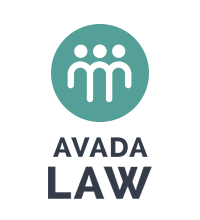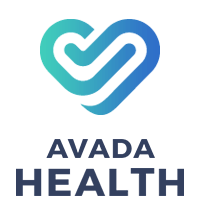Meet The New Agency SEO Template From The Avada Team
Sed ut perspiciatis unde omnis iste natus error sit voluptatem accusantium doloremque laudantium.

See Our Top Notch Services
Sed ut perspiciatis unde omnis iste natus error sit voluptatem accusantium doloremque laudantium.
Our Work
Sed ut perspiciatis unde omnis iste natus error sit voluptatem accusantium doloremque laudantium.
Our Plans
Sed ut perspiciatis unde omnis iste natus error sit voluptatem accusantium doloremque laudantium.
Standard
- 5 Projects
- 5 GB Storage
- Unlimited Users
Premium
- 10 Projects
- 15 GB Storage
- Unlimited Users
Professional
- 15 Projects
- 30 GB Storage
- Unlimited Users
Extreme
- Unlimited Projects
- Unlimited Storage
- Unlimited Users
Our News
Sed ut perspiciatis unde omnis iste natus error sit voluptatem accusantium doloremque laudantium.
Mortgage rates slide to 6.32%, boosting purchase activity
US mortgage rates fell last week to a one-month low, spurring home-purchase activity.The contract rate on a 30-year mortgage dropped 8 basis points to 6.32% in the week ended Nov. 28, which included the Thanksgiving holiday, according to Mortgage Bankers Association data released Wednesday. The rate on a five-year adjustable mortgage declined to 5.4%, the lowest since May 2023.READ MORE: Economist says income growth will boost home affordabilityThe group's gauge of home-purchase applications climbed 2.5% to the highest level since early 2023. While the weekly figures tend to be volatile around holidays, a sustained pickup in purchase activity would point to steady underlying demand for the affordability-challenged housing market. MBA's measure of refinancing, meantime, fell for a fifth straight week — the longest stretch of declines in a year. The MBA survey, which has been conducted weekly since 1990, uses responses from mortgage bankers, commercial banks and thrifts. The data cover more than 75% of all retail residential mortgage applications in the US.
Industry pushes new HMBS to fix aging reverse loans
A new type of reverse mortgage security needs to be created to accommodate Home Equity Conversion Mortgages that have reached the 98% maximum claim amount, a pair of industry organizations said in their respective responses to a government request for information.The RFI from the Federal Housing Administration and Ginnie Mae — along with their parent agency the Department of Housing and Urban Development — was seeking opinions on the appropriate role of the HECM and HMBS programs in facilitating access to home equity for senior homeowners and opportunities to improve these programs, an Oct. 2 Federal Register posting said.The request noted the declining volume of HMBS issuances starting in 2022. That year had a record of almost $14 billion, according to an article on the National Reverse Mortgage Lenders Association website. The total dropped by half to $6.5 billion and then to $6.3 billion securitized in 2024, the same level as nearly a decade prior.The comment period ended on Dec. 1.How the trade groups want to change the reverse mortgage programNRMLA thanked FHA and Ginnie Mae for opening this review, the group said in a letter signed by its president, Steve Irwin."As with any long-standing programs, there are opportunities to modernize and improve certain of their attributes, including critically necessary changes to substantially reduce the costs to FHA and the [Mutual Mortgage Insurance Fund] as well as to improve issuer liquidity and the financial strength and soundness of the Ginnie Mae HMBS Program," Irwin continued.Consumer demand for HECMs remains strong according to its members, the Mortgage Bankers Association letter said."However, overall HECM loan volume has not increased due to overly burdensome aspects of the loan process and the steep upfront costs associated with the loan," wrote Pete Mills, senior vice president of residential policy and strategic industry engagement. "These factors discourage many potential borrowers as they evaluate whether a HECM is suitable for their needs."Proprietary products with higher loan limits and the willingness to be secured by non-FHA properties are filling this breach, the MBA said. In the recently completed fiscal year 2025, 28,172 HECMs were endorsed, HUD data posted on the NRMLA website said. This was up from 26,521 in 2024, but down from 32,991 in 2023 and a recent high of 64,489 in fiscal year 2022.The best year ever was 114,692 in fiscal year 2009. This was the same year the reverse mortgage program fund was put into the MMIF and starting a few years later, HECMs became a growing share of claims.This has since turned around, and the HECM stand-alone MMIF capital ratio was 24.5% in fiscal 2024, while the overall FHA program was 11.47%.But reliance on the private reverse mortgage market only "will leave many seniors underserved and create system-wide fragility," NRMLA's Irwin said."The HECM and HMBS programs remain essential and, we believe, foundational to the functioning of the entire reverse mortgage market and fulfilling the critical social mission this unique product serves," he continued.Why a new HMBS security is neededThe resecuritization of loans that have reached 98% of claim amount will enhance liquidity, as well as stimulate investor demand for HMBS and increase guarantee fee revenue, the MBA letter argued.To go alongside this, MBA said existing servicers should be allowed to continuing servicing reverse mortgages assigned to FHA."FHA would significantly benefit from the immediate relief gained by leaving servicing in the hands of the private market, with lenders who are highly incentivized to minimize servicing-related losses," Mills said. "Under the proposed framework, private servicers would retain servicing fee revenue throughout the life of the loan, strengthening their business models."In turn, because of the competitive nature of the market, any savings this generates can be passed on to borrowers in terms of lower pricing.What other changes need to be made to the HECM programThe MBA also gave a laundry list of potential program improvements. These include:Restructuring the upfront HECM mortgage insurance premium;Restructuring the principal limit factors;Modernize collateral risk assessment through the use of automated valuation models along with other data sources;Adjust the life expectancy set-asides; andCreating a robust counseling process through the use of digital tools and expanding remote access.NRMLA made a number of similar arguments, including for a return to risk-based pricing for the mortgage insurance premium.It is also looking for an update to the interest rate indices used for HECMs and HMBS."Investors have transitioned away from the Libor index to the Secured Overnight Financing Rate, but current HECM loans still utilize the Constant Maturity Treasury index for many loans," which creates a capital market conflict, Irwin wrote.HECM floating-rate securities are based on a monthly reset SOFR index, but the underlying reverse mortgages predominantly are indexed to the 1-year CMT. "This index mismatch creates 'index basis risk,' meaning the interest rate on the loan and the rate on the security do not move in tandem," NRLMA said.It suggested that for monthly adjusting HECMs, FHA should allow the 30-day Average SOFR as the interest rate index, and Ginnie Mae should authorize HECMs which are priced to this to be eligible for HMBS pools. "This change aligns the loan rate structure directly with the monthly reset SOFR floating securities that dominate the secondary market," Irwin said.
How GSE changes in LLPAs, MBS could shift rates
Bill Pulte, the director of the oversight agency setting policy for the government-sponsored enterprises, has pressed Federal Reserve Chair Jerome Powell to do more to lower mortgage rates but the GSEs themselves also have a hand in loan pricing that reform could impact.A Fannie Mae study notes that while the 10-year treasury yield that can be influenced by Fed policy is the main component in GSE mortgage rates, the amount lenders charge consumers for other things the enterprises require and the secondary market spread also play a role. From various primary market requirements that affect loan costs to maintaining an implicit guarantee that affects the spread between treasuries and mortgage-backed securities, the GSEs' operations can have a lot to do with rates.With that in mind, here are some of the possible scenarios that could influence mortgage rates if the enterprises move forward with staging a new stock offering for some of their shares.Holding more MBS on balance sheetOne way the government-sponsored enterprise policymakers could try to keep long-term rates stable or lower is to buy and hold more MBS on their balance sheets. The Fed also has bought MBS at times. Right now they're allowing runoff with reinvestment of proceeds in treasuries."They're clearly not going to be able to get the Fed to do what they want while Chairman Powell is still there, so the GSE balance sheets are going to look awfully attractive," said Isaac Boltansky, managing director and head of public policy at Pennymac. "I think that's a mighty powerful tool, and I would be surprised if they don't use it at some point over the next year or so."While there is a lot of debate around the concept because the portfolios played a role in risks that forced the GSEs in conservatorship, some market stakeholders like the Community Home Lenders of America have advocated for what they say is a balanced approach. The CHLA suggests only buying MBS if the primary-secondary spread is "elevated 170 basis points" and capping the buying at $300 billion per GSE.It won't be easy to avoid raising rates in transitioning the GSEs to more of a profit-driven model but this is one of a limited number of ways to do it, according to Stanford University researchers. Why there are mixed opinions on how reform may affect ratesThe Stanford researchers found rates could go up more than 20 basis points as a result of an equity offering, or more than 30 with conservatorship exit added to that, or above 80 in total with the loss of an implicit guarantee on top of it. They added the caveat that their numbers were estimates based on what were unspecified GSE reform plans at the time.However, Trump administration officials have said they want to avoid home affordability strains and have pledged to retain the implicit government guarantee that protects the large agency MBS market, in order to avoid disrupting secondary market bond pricing and rates.Some groups like the Mortgage Bankers Association have called for an explicit government guarantee that would give the MBS market more confidence there'd be a public backstop for the enterprises in ways likely to lower rates.Boltansky said Congressional action needed for one has been discussed for years but not materialized, so the market may want to consider preserving the current conservatorship model in some fashion as they go through reform."If we're going to operate in the world that we live in, I think that we should have clarity that the existing backstop, which is $254 billion of the aggregate, needs to continue, no matter what scenario plays out in the future," he said.Eventually, reform that allows the GSEs to compete more with the private sector could lower rates, said Larry Goldstone, president of capital markets and lending at BSI Financial Services."I suspect that with Fannie and Freddie competing in a free market economy, guarantee fees might come down, which might bring mortgage rates down a little bit," he said.Potential for various adjustments in LLPAs"I think the other thing that they can do, and that is sort of in that affordability bucket, is they will lower loan-level pricing adjustments," Boltansky said. "The director has already suggested that that's something that they are looking at, and I think that's something they can do."Negative adjustments to what the GSEs pay to guarantee the loans they buy based typically on characteristics like a low credit score are structured as an upfront fee for the lender but can get passed on to borrowers and affect their rate. Legislatively-mandated score modernization the enterprises are engaged in is among multiple reasons they could be updating their pricing grids."They are looking at ideas around the LLPAs. It's unclear what they are. We're trying to set up a meeting with Director Pulte ourselves at NAMB, to sit down and talk with them about that," said Kimber White, president at the National Association of Mortgage Brokers.The GSEs' status could make a difference when it comes to the willingness to cut LLPAs and White said that while he thought full removal of the risk-based adjustments was unlikely, a partial one might be."We would love to have all the LLPAs go away, yeah, but being realistic, what about half? Would a 50% reduction help? Yes, it would drop at least, I think, a quarter to three eighths of percent in interest rate across the board," White said.Extreme rate cuts might not even be desirable given how those during the pandemic have left the market with many borrowers reluctant to give up their low financing costs to move. It also could create a challenge for servicers related to managing prepayment risk."I think lowering rates for a short period of time, maybe two or three quarters, and then stopping, would make sense into 2026," said Phil Crescenzo, branch manager at Nation One Mortgage Corp. "That could restart some activity."While Trump administration officials have said home affordability is a priority for them, they also have several other considerations that could play into decisions about what direction to move g-fees and LLPAs, said Reetu Mittal, a senior mortgage specialist at Vema. Reetu Mittal "This is not the only factor they will be taking into account. There will be other factors as well. They could decide to increase the g-fee because they want the GSEs to be more financially sound, because that means Fannie and Freddie will get more money from lenders," she said.That could mean LLPA adjustments won't necessarily move in one direction or the other but vary in new ways across the grid based on different combinations of loan characteristics with an outcome that addresses the need for profitability and affordability in an even-handed way."They would have to think about all the perspectives if they did that, right? Like, which LLPAs they want to introduce or change for which category. They have to maintain a balance," Mittal said.
What Our Clients Say

Ability proceeds from a fusion of skills, knowledge, understanding and imagination, consolidated by experience.

Beauty is when you can appreciate yourself. When you love yourself, that’s when you’re most beautiful.









